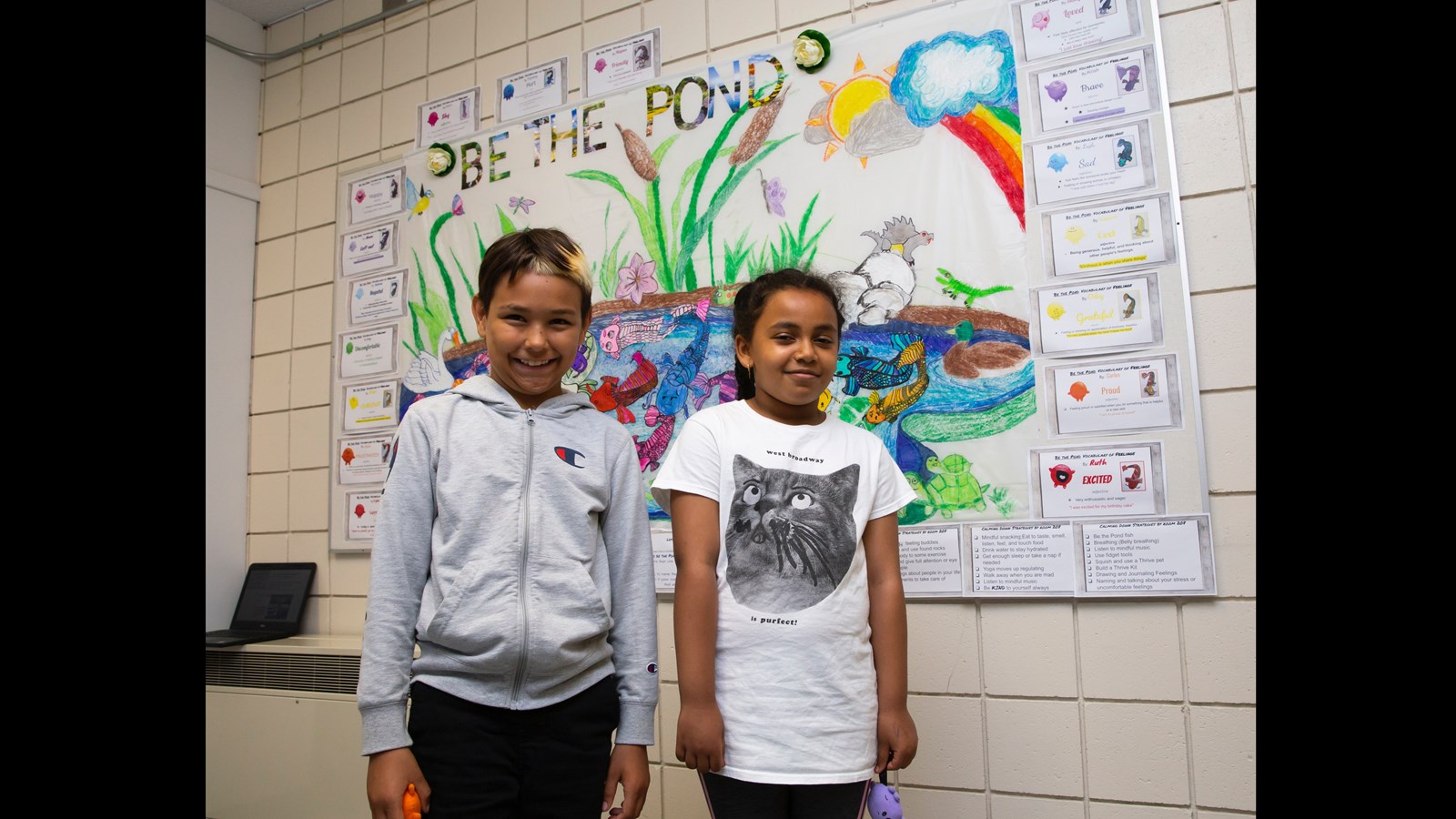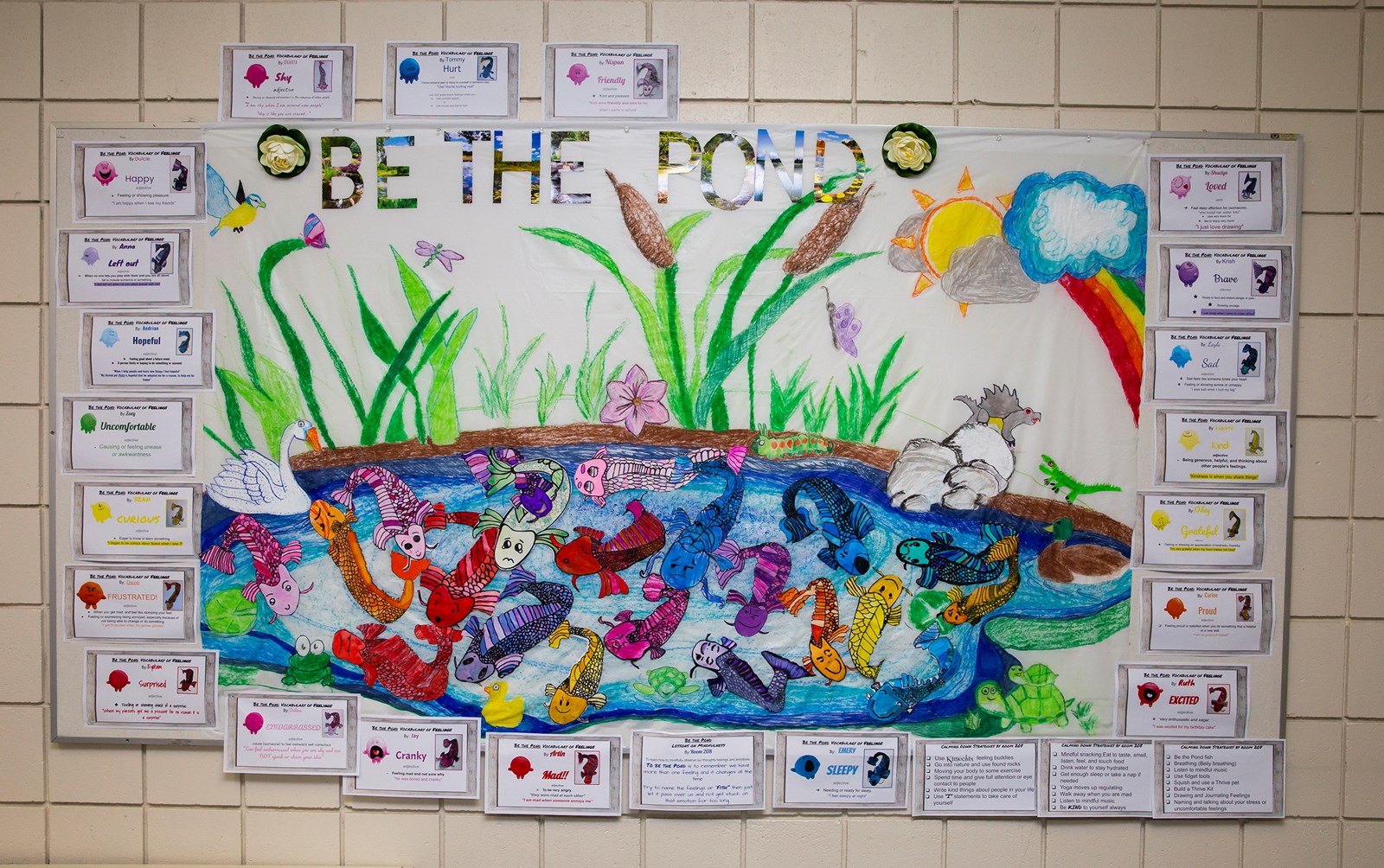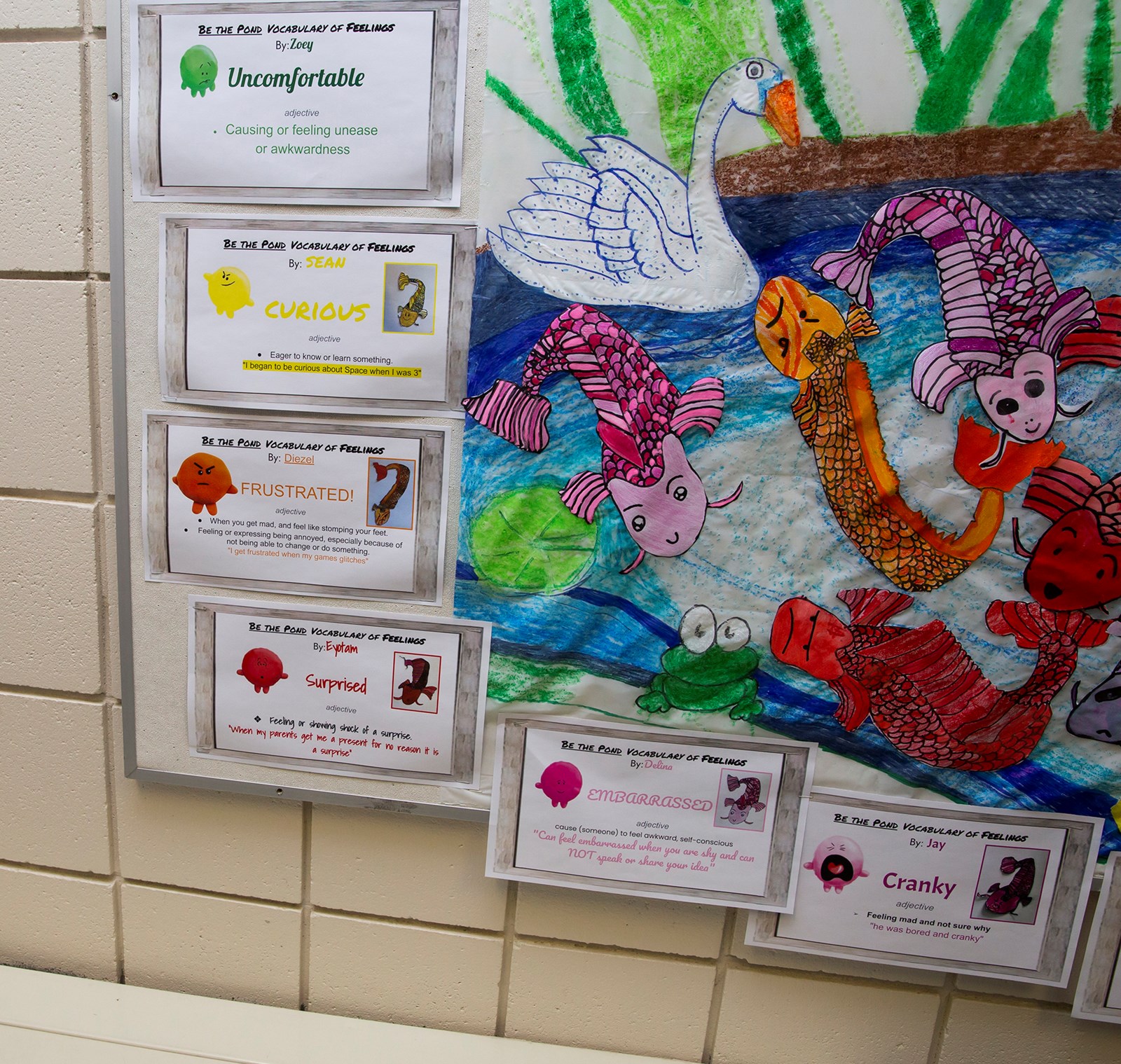Fort Rouge students learn to “Be The Pond”
August 8, 2022
With files from Jolene St. Germain
A Grade 3/4 class taught their fellow Fort Rouge School students about feelings and mindfulness through a special student-guided project.
Room 208 encouraged others to “be the pond” whenever they are experiencing negative or overwhelming emotions.
The project began after a virtual assembly at Fort Rouge School. During that April 4 assembly, Principal Stacie Edgar showed students a short video on self-regulation strategies. The video, entitled Be The Pond, was based on the work of author Laurie Wright.
“This was just a good mental health strategy for everyone in the building, not just the students,” Ms. Edgar said.
To “be the pond” is to remember we have more than one feeling; these feelings can change all the time. When we name these feelings (the video encourages students to consider them as fish), we can let them swim past us and not get stuck in one particular negative emotion for too long.
“It’s okay to have feelings,” said student Diezel McMillan. “When you have a feeling, like cranky, see the fish and be the pond instead.”
Ms. Edgar invited teacher Jolene St. Germain and her Room 208 students to explore this strategy and share their work on the school’s front bulletin board.
“Fort Rouge is very much focused on being a self-regulation school. We’re trying to create a haven where social-emotional skills are focused on. We want students to be calm, alert and learning before we start processing academics,” Ms. St. Germain said.
“We want students to be the pond, and notice their feelings, rather than being the fish and owning that feeling all day. We students to be reflective, know that it is okay to have feelings, know to let those feelings work through themselves, and if they need help from any of the adults in this school, we are definitely here for them.”
Ms. St. Germain turned the challenge into a student-guided project; students posted guiding questions and held votes in Google classroom to determine the direction of the project.
“This is 100 per cent a student-created project,” Ms. St. Germain said.
The project gave the students the opportunity to explore mindfulness in many ways.
The class used Thrival Kits provided by the Canadian Mental Health Association (Manitoba-Winnipeg). The kits show children how to develop positive coping strategies that help them understand what makes them unique, and helps them to develop tools to deal with life events and emotions.
School Social Worker Mande Smith also provided the classroom with stuffed Kimochi characters, part of a classroom-based program that promotes social and emotional learning by teaching children the skills to understand their emotions, peacefully communicate feelings to others, develop positive relationships, manage conflicts and challenges. Kimochis are colourful characters that each represent an emotion, such as curious, shy or frustrated.
“Kimochi is the Japanese word for feelings,” Diezel said.
Students also learned Calm, Alert and Learning strategies developed by Dr. Stuart Shanker.
Drawing the pond
For their hallway bulletin board display, students drew a large pond and populated it with fish that represented different feelings/emotions. Students each chose a fish/feeling to draw and created small vocabulary posters to include in the bulletin board display.
Students researched how to draw fish for their display, as well as other features they could add to the pond habitat. They each selected a Kimochi based on a particular emotion/feeling, and then drew fish with representative facial expressions and colours.

The vocabulary of feelings
An important part of the process was giving students words and ways of describing and identifying different feelings they may be experiencing.
Ms. St. Germain used a three-point approach to help develop students’ vocabulary; this included finding a picture that illustrated the word, finding a definition and using the word in a sentence meaningful to the writer.
Student Anna Mekonnen created a fish and vocabulary poster for feeling left out.
“That’s when no one wants to play with you and you feel all alone,” she said.
Anna suggested that when people are feeling left out, they could journal or draw about their feelings, or use distracting tools like fidget spinners.
Diezel drew a fish and made a vocabulary poster for the feeling of frustration.
“That’s when you get mad, and feel like stomping your feet,” Diezel said. “It’s feeling or expressing being annoyed, especially because of not being able to change or do something.”
Diezel said when he is feeling frustrated, his strategy is to go outside to cool off.
“When we do things like that to calm down, we call that regulating,” he said.

Calming strategies
Room 208 shared their work with their fellow Fort Rouge School students during a May assembly. The class shared several calming strategies:
- Deep breathing/belly breathing;
- Listen to mindful music;
- Use fidget tools (such as fidget spinners);
- Draw and journal about your feelings;
- Name and talk about your stress and uncomfortable feelings;
- Go in to nature and use found rocks;
- Move your body to some exercise;
- Spend time with other people, give them your full attention and eye contact;
- Write kind statements about people in your life;
- Use “I” statements to take care of yourself;
- Try mindful snacking with healthy foods to engage all of your senses. Eat to taste, smell, listen, feel and touch.
- Drink water to stay hydrated.
- Get enough sleep at night and take naps if needed;
- Try simple yoga moves for self-regulation;
- Walk away when you are mad;
- Be kind to yourself always.
Anna said that she and her classmates wanted to help other students in their school to understand and use mindfulness to deal with troublesome feelings.
“I get some of these feelings sometimes, so I’m happy that we are helping other kids to be the pond,” she said.
